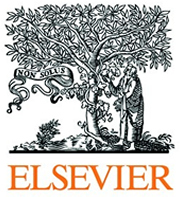Volume 103, Issue 3, January 2013, Pages 597–602
Effect of chronic exposure to rimonabant and phytocannabinoids on anxiety-like behavior and saccharin palatability
- Lesley D. O’Brien1,
- Kiri L. Wills1,
- Blair Segsworth,
- Brittany Dashney,
- Erin M. Rock,
- Cheryl L. Limebeer,
- Linda A. Parker
 ,
, 
- Department of Psychology and Collaborative Neuroscience Program, University of Guelph, Guelph, ON, Canada N1G 2W1
Abstract
 The acute effects of cannabinoid compounds have been investigated in animal models of anxiety-like behavior and palatability processing. However, the chronic effects of cannabinoids in such models are poorly understood. Experiment 1 compared the effects of both acute and chronic (14 days) exposure to the CB1receptor inverse agonist/antagonist, rimonabant, and the cannabis-derived CB1 receptor neutral antagonist, tetrahydrocannabivarin (THCV), on: 1) time spent in the open, lit box in the Light–Dark (LD) immersion model of anxiety-like behavior and 2) saccharin hedonic reactions in the taste reactivity (TR) test of palatability processing. Experiment 2 compared the effects of chronic administration of cannabis-derived Δ9-tetrahydrocannabinol (Δ9-THC), cannabidiol (CBD) and cannabigerol (CBG) in these models. Tests were administered on Days 1, 7 and 14 of drug administration. In Experiment 1, rimonabant, but not THCV, produced an anxiogenic-like reaction in the LD immersion test and reduced saccharin palatability in the TR test; both of these effects occurred acutely and were not enhanced by chronic exposure. In Experiment 2, Δ9-THC also produced an acute anxiogenic-like reaction in the LD immersion test, without enhancement by chronic exposure. However, Δ9-THC enhanced saccharin palatability in the TR test on Day 1 of drug exposure only. CBD and CBG did not modify anxiety-like responding, but CBG produced a weak enhancement of saccharin palatability on Day 1 only. The results suggest that the anxiogenic-like reactions and the suppression of hedonic responding produced by rimonabant, are mediated by inverse agonism of the CB1 receptor and these effects are not enhanced with chronic exposure.
The acute effects of cannabinoid compounds have been investigated in animal models of anxiety-like behavior and palatability processing. However, the chronic effects of cannabinoids in such models are poorly understood. Experiment 1 compared the effects of both acute and chronic (14 days) exposure to the CB1receptor inverse agonist/antagonist, rimonabant, and the cannabis-derived CB1 receptor neutral antagonist, tetrahydrocannabivarin (THCV), on: 1) time spent in the open, lit box in the Light–Dark (LD) immersion model of anxiety-like behavior and 2) saccharin hedonic reactions in the taste reactivity (TR) test of palatability processing. Experiment 2 compared the effects of chronic administration of cannabis-derived Δ9-tetrahydrocannabinol (Δ9-THC), cannabidiol (CBD) and cannabigerol (CBG) in these models. Tests were administered on Days 1, 7 and 14 of drug administration. In Experiment 1, rimonabant, but not THCV, produced an anxiogenic-like reaction in the LD immersion test and reduced saccharin palatability in the TR test; both of these effects occurred acutely and were not enhanced by chronic exposure. In Experiment 2, Δ9-THC also produced an acute anxiogenic-like reaction in the LD immersion test, without enhancement by chronic exposure. However, Δ9-THC enhanced saccharin palatability in the TR test on Day 1 of drug exposure only. CBD and CBG did not modify anxiety-like responding, but CBG produced a weak enhancement of saccharin palatability on Day 1 only. The results suggest that the anxiogenic-like reactions and the suppression of hedonic responding produced by rimonabant, are mediated by inverse agonism of the CB1 receptor and these effects are not enhanced with chronic exposure.
Highlights
Keywords
- Anxiety;
- Depression;
- Palatability;
- Appetite;
- Cannabinoid;
- CB1;
- Tetrahydrocannabivarin;
- Cannabidiol;
- Cannabigerol;
- Rimonabant;
- Delta-9-tetrahydrocannabinol
Figures and tables from this article:

- Corresponding author at: Department of Psychology, University of Guelph, Guelph, Ontario, Canada N1G 2W1. Tel.: + 1 519 824 4120, 56330; fax: + 1 519 837 8629.
- 1
- Equally contributed.
Copyright © 2012 Elsevier Inc. All rights reserved.







